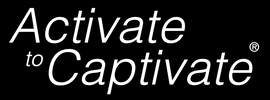 No matter how hard we try, there will always be instances when we have limited time to practice a presentation. In this situation, it’s critical that you don’t panic or scold yourself for failing to carve out enough time beforehand. Instead, focus on the following game plans: 1st Level: No time to prepare If you haven't rehearsed your speech, try to stay relaxed. Walk up to the front of the room, breathe and smile. Introduce yourself (if someone hasn’t introduced you). Then, look at your first slide, say the point of the slide, and then go into the details. When you click to the next slide, pause, breathe, and then say the point of the slide and then explain the details. The pattern of 1) Point of slide and 2) Details is very effective if you want to stay on track and look confident as you present. 2nd Level: A few hours of time to prepare If you only have a little time to prepare, the first thing you should do is practice your introduction. It’s the first time people hear you and it is your premium opportunity to establish a solid connection with your audience. The second thing to do is figure out your transition sentences. When does one idea end and another begin? Plan out each transition and practice it out loud. Last, practice your conclusion. An audience won’t know you haven’t practiced very much if your introduction, transitions, and conclusion are smooth. 3rd Level: At least one day to prepare When you have a high-stakes project that you are presenting, it is critical to leave time to prepare. For these presentations, in addition to the introduction and conclusion, I suggest knowing the first and last sentence of every slide. This will drastically help the flow of your speech sound professional. If you can look at any slide and know how it begins and ends, you are ready to present. For more communication tips or to book a workshop, please visit www.activatetocaptivate.com. |
AuthorBri McWhorter is the Founder and CEO of Activate to Captivate. Categories
All
Videos
Archives
June 2024
|
Click to Contact
© 2014-2024 Activate to Captivate, LLC
All Rights Reserved
All Rights Reserved

 RSS Feed
RSS Feed
